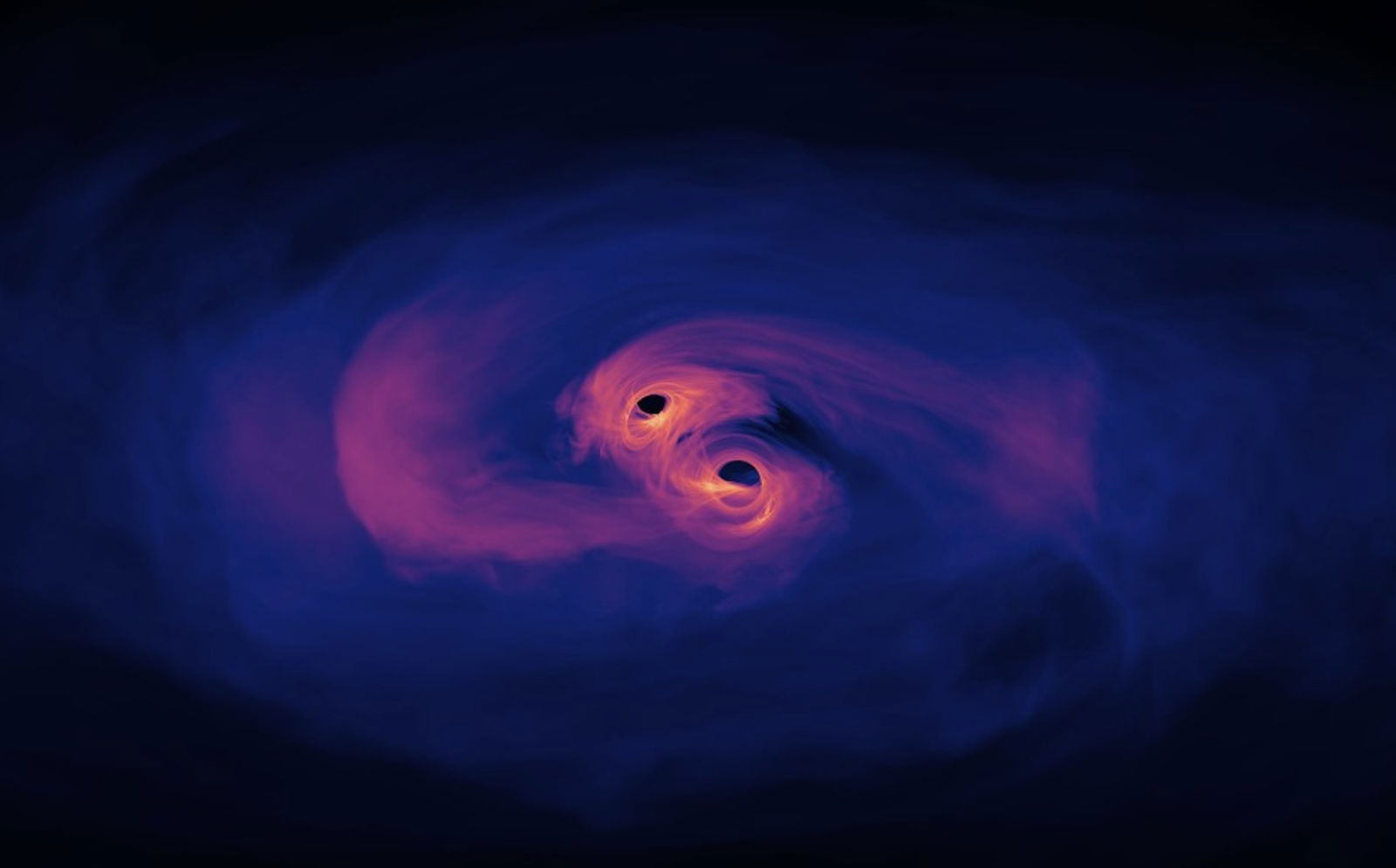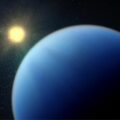Almost every galaxy hosts a supermassive black hole at its center. When galaxies merge, the two black holes spiral in closer to each other and eventually merge through gravitational wave emission. Within a few billion years, this process will be featured close to home as our own Milky Way will collide with its nearest massive neighbor, the Andromeda galaxy.
If the two black holes have different masses, the emission of gravitational waves is asymmetric, causing the merger product to recoil. The intense burst of gravitational waves in a preferred direction during the final plunge of the two black holes towards each other kicks the remnant black hole in the opposite direction through the rocket effect. The result is that gravitational waves propel the black hole remnant to speeds up to a few percent of the speed of light. The recoiling black hole behaves like a rocket’s payload powered by gravitational waves.
In 2007, I published a single-authored paper in the prestigious journal Physical Review Letters, suggesting that a gravitational-wave recoil could displace a black hole from the galactic center and endow it with fast motion relative to the background stars. If the kick is modest, dynamical friction on the background gas or stars would eventually return the black hole back to the center.
Modeling the process and its observability through computer simulations became the focus of a PhD thesis and the topic of 17 collaborative papers with my former graduate student, Laura Blecha, a decade ago.
The gravitational wave emission during the black hole merger can be observed directly. In particular, the Laser Interferometer Space Antenna (LISA), planned for launch by the European Space Agency (ESA) in 2035, is a space interferometer consisting of three spacecraft whose positions mark the vertices of an equilateral triangle 2.5 million kilometers on a side in an orbit around the Sun. LISA will be able to detect black hole pairs with masses between ten thousand and ten million solar masses throughout the Universe.
An electromagnetic counterpart of a merger event would greatly reduce its positional uncertainty, and also determine the redshift of the gravitational wave source, enabling its use as a “standard siren” for precision cosmological distance measurements. Electromagnetic radiation could naturally be produced by a surrounding accretion disk before coalescence, through various possible effects. As an example, viscous dissipation of gravitational-wave energy in a surrounding gaseous disk might result in a weak electromagnetic transient shortly after the merger, re-equilibration of the inner edge of the disk could create an X-ray brightening on a timescale of ten to a thousand years, and shocks produced by the remnant’s recoil might generate electromagnetic reverberations which may take ten thousand years to dissipate as enhanced infrared luminosity.
It is not obvious whether these signals could be distinguished from the much more common sources of temporal variability in quasars with a single black hole. Moreover, the luminosity of any circumbinary disk is expected to be significantly reduced by the cavity created by the merging black hole pair, which acts as a blender, clearing the surrounding gas in the final stage of the merger.
On longer timescales, the portion of the accretion disk that remains bound to the recoiled black hole remnant is expected to be detectable as an offset quasar, both kinematically and spatially. However, its lifetime is limited by the supply of gas that can remain gravitationally bound to it.
Interestingly, the recoil of the remnant black hole allows it to frequently disrupt stars along its path and produce prompt flares that do not depend on the prior existence of a gaseous disk in the vicinity of the merging binary. Tidal disruption of stars can be observed out to cosmological distances, especially if a relativistic jet is produced. The kick velocity of the remnant black hole is independent of its actual mass and only depends on the mass ratio, spins, and orbits of the merging black holes. The kick reaches its highest values for rapidly spinning black holes, with oppositely oriented spines.
Can gravitational-wave rockets be employed for space travel? The gravitational wave storm near merging black holes would kick any nearby planet to high speeds. Sailing on gravitational waves to intergalactic space could be fun. To accomplish it, a Galactic civilization like ours would need to park a spacecraft near the Milky Way’s black hole, Sagittarius A*, and wait for its merger with Andromeda’s black hole in a few billion years. Being at the right time and place is essential for gravitational-wave propulsion.
Where is the nearest pair of black holes? We do not know, but if dark matter is composed of primordial black holes in the asteroid mass range, it would potentially be relatively nearby. In that case, pairs of those might reside inside the Solar system. Discovering them would constitute a 21st-century example of disruptive science.
Speaking about disruptive discoveries, a lengthy article in the May 22, 2025, issue of Nature magazine was titled “Are Groundbreaking Science Discoveries Becoming Harder to Find?” The author mentioned many possible reasons, but neglected the obvious. In the current academic culture, experts who garner prestige and funding from past knowledge resist out-of-the-box thinking because it threatens their status and ego. Some block the publication of dissenting views and ridicule alternative thinking outside the beaten path. This sends a loud signal that keeps all members of the herd aligned and deters fledgling scientists from exploring paths not taken by the herd.
Just like some news reporters, junior scientists are compelled to report what their senior audience wants to hear. One might argue that this was always the case, but the larger size of today’s scientific community amplifies the societal pressure within academia now more than ever. Following the Central Limit Theorem in statistics, many researchers tend to regress to the mean view with diminishing deviations. Social media exert additional pressure that suppresses dissent and innovation in science.
How can innovation be rejuvenated? One approach is to encourage nontraditional approaches to resolving scientific questions that taxpayers care about, such as “are we alone?” or “what does super-intelligence look like, both terrestrial and extraterrestrial?” These, rather than black hole pairs, will be the actual rockets that propel humanity to a better future.
Avi Loeb is the head of the Galileo Project, founding director of Harvard University’s Black Hole Initiative, director of the Institute for Theory and Computation at the Harvard-Smithsonian Center for Astrophysics, and the former chair of the astronomy department at Harvard University (2011-2020). He is a former member of the President’s Council of Advisors on Science and Technology and a former chair of the Board on Physics and Astronomy of the National Academies. He is the bestselling author of “Extraterrestrial: The First Sign of Intelligent Life Beyond Earth” and a co-author of the textbook “Life in the Cosmos”, both published in 2021. The paperback edition of his new book, titled “Interstellar”, was published in August 2024.

